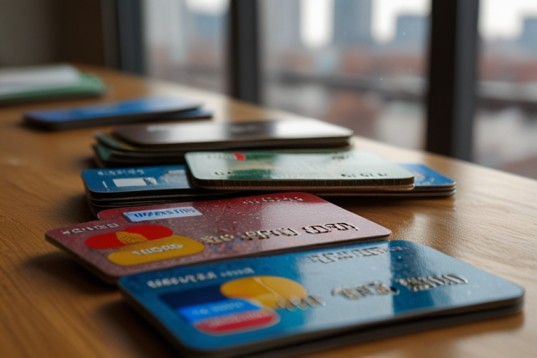The hardest part of bankruptcy is reestablishing credit. Luckily, getting a credit card after filing for bankruptcy isn’t an impossible feat.
How Smart Card Users Utilize Credit
“Smart” card users consider credit to be an alternative form of payment. In other words, they use credit cards online or in situations where it would be faster to make a purchase with credit. Most importantly, they never buy products or services that they couldn’t otherwise afford. A good measure of a consumer’s readiness for a credit card is their ability to pay on time, every time. If there is even a possibility of a late payment, opening lines of credit is generally not recommended. The key to reestablishing credit is to begin considering credit in a new light. That is, as an extension of finances as opposed to a way to put-off paying for stuff.
Stick to Two or Fewer Cards
There is always a strong impulse to open as many lines of credit as possible when rebuilding a credit score. This is an unwise approach. The goal in credit repair is to make consistent payments and keep balances low or nonexistent by paying off the card each month. As such, financial experts highly recommend sticking to one or two credit cards at most during a credit rebuilding phase. Additional lines should only be considered after 6 or more months of consistent payments.
Be Aware of Credit Scams
Contrary to what most consumers believe, many credit companies actually target those who have recently filed for bankruptcy. There have been reports of issuers charging a total of $350 in various fees for a card with a line of just $500. No matter which company an applicant decides to apply to for credit, it is critical that he or she remain aware of those few untrustworthy financial institutions looking to make money off of those just coming out of a recent financial crisis. Services like LifeLock will monitor your credit for any changes in the event of a potential scam.
Don’t Accept Offers – Apply Independently
Although credit card companies bombard consumers with applications daily, it is highly recommended that those interested in opening a line of credit do their own shopping. An individual’s credit needs are personal, and as such, generally can’t be covered by the blanket plans that are sent out via direct mail. Additionally, shopping around gives consumers the ability to compare rates and determine which financial institution has the best offer to fit their situation. Once a card is selected, applicants should take care to only apply for one card when possible as multiple applications may lower a credit score.
Choose a Major Bank Card
Although there are secondary lenders available, Capitol One for example, consumers interested in acquiring a credit card should try to go through a major bank such as SunTrust or Bank of America. This also ensures that payments can be made in a local branch as well as online which can be particularly helpful if a payment is close to the “late payment” deadline. Major bank cards can generally be issued as both unsecured and secured lines of credit.
Consider Fees and Charges
Credit cards often come with fees. Cards with teaser rates or variable rates should be avoided altogether. These are interest rates which start low and rise rapidly, or which fluctuate depending on the financial market. Consumers should read over and understand the policies and processing fees for the potential card. Applicants should also make note of penalties or rate increases that could occur. It is favorable for the consumer to pick a card that has a grace period between when a charge is noted and when the bill needs to be paid.
What to Look for in a Secured Credit Card
Some consumers are more comfortable with a low-limit secured credit card. These are cards that are backed by a security deposit and have limits of around $500 or less. It’s important to remember that some secured lines of credit can be rip-offs that charge outlandish fees and don’t return the security deposit. Consumers should look to apply for a secured card with zero application fees, $50 or less in annual processing fees, and an interest bearing secure deposit account. Some applicants may also find plans that automatically convert a card into an unsecured line an attractive opportunity.
No matter which credit company you choose to go with, be prepared to do your homework. Educate yourself on the ins and outs of your potential card and you won’t have to worry about facing any more financial issues in the future.
